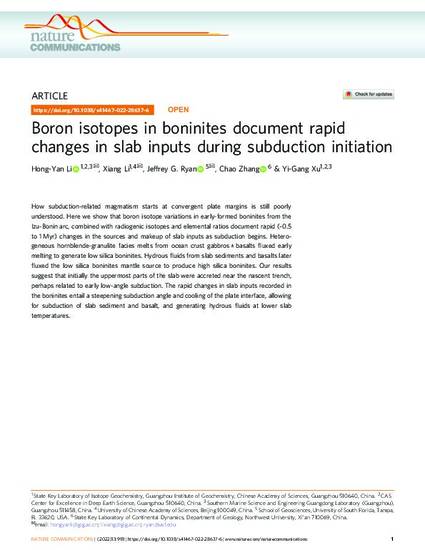
How subduction-related magmatism starts at convergent plate margins is still poorly understood. Here we show that boron isotope variations in early-formed boninites from the Izu-Bonin arc, combined with radiogenic isotopes and elemental ratios document rapid (~0.5 to 1 Myr) changes in the sources and makeup of slab inputs as subduction begins. Heterogeneous hornblende-granulite facies melts from ocean crust gabbros ± basalts fluxed early melting to generate low silica boninites. Hydrous fluids from slab sediments and basalts later fluxed the low silica boninites mantle source to produce high silica boninites. Our results suggest that initially the uppermost parts of the slab were accreted near the nascent trench, perhaps related to early low-angle subduction. The rapid changes in slab inputs recorded in the boninites entail a steepening subduction angle and cooling of the plate interface, allowing for subduction of slab sediment and basalt, and generating hydrous fluids at lower slab temperatures.
Nature Communications, v. 13, art. 993
Available at: http://works.bepress.com/jeffrey_ryan/105/
